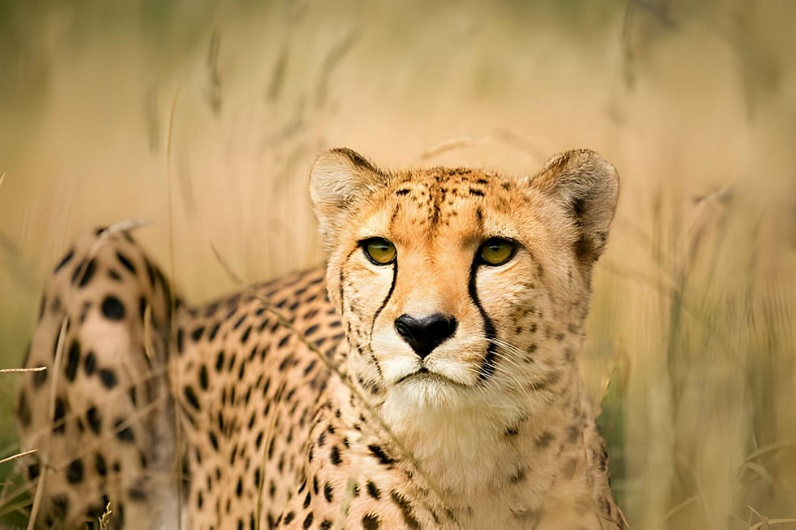Lion, Tigers, and leopards are wild cats popular for raw strength, power, and stealth. Even cheetah belongs to the wild cat species but is a little unique than the others.
Physique built for the Chase:
The big cats are popular for their powerful builds and retractable claws. Cheetah has slender and lean with long, muscular legs and flexible spine.
This helps it to reach an astonishing speed of up to 75 mph (120 km/h). They are the fastest running land animals on the Earth.
This unique physique also reflects their hunting tactic, as they rely on speed and agility to outrun and incapacitate their prey rather than stalk and overpower it.
Claws are out:
Other big cats retract their claws for silent stalking, but the cheetahs have semi-retractable claws. It means their claws are partially exposed, which provides constant traction for those fiery runs.
While this might seem like a disadvantage in other aspects, it is crucial for their high-speed chases. It allows them to grip the ground firmly and change direction rapidly.
Purring Predator:
Lions and tigers have powerful and chilling roars but these spotted sprinters can purr, chirp, and meow. This difference originates from their distinct evolutionary heredity.
Lions and tigers belong to the species Panthera, while cheetahs belong to the genus Acinonyx, who have deviated from the Panthera lineage millions of years ago.
Great vision:
Cheetahs have exceptional vision, which is particularly great for daytime hunting. Their eyes are positioned high on their heads, so they get access to a wide field of view to scan for prey across the savanna.
Besides, they have special retinas that allow them to differentiate colours better than most other cats. It enhances their ability to track prey amidst the grasslands.
Spots:
Cheetahs have solid, round or oval spots spread evenly across their coat, while leopards have clusters of spots forming spiral or circular arrangements. These differences reflect their dissimilar hunting styles.
Their spots help to stay discreet in the tall grass, while leopard spots arrangement offers better concealment amongst foliage and shadows.

Solitary lifestyle:
Lions and tigers move around in groups, but cheetahs are solitary creatures except during breeding season. As sprinters, they depend on individual skill and speed, not coordinated group attacks.
However, mothers do raise their cubs for several months, teaching them hunting skills before they depart to live independently.
A Fragile Future:
Habitat loss due to human encroachment and conflict with livestock farmers are significant concerns even for the speedy wild cats.
Besides, their specialized hunting style makes them vulnerable to prey depletion caused by poaching and competition with other predators. Conservation efforts are crucial to ensure the survival of these unique cats.
Beyond the Differences:
While cheetahs stand apart from other wild cats in many ways, they share the vital role of predators within the wilderness. Their presence helps maintain healthy prey populations and balances the delicate web of life.
It is essential to understand their ecological significance and work towards a future where these graceful spotted sprinters continue to survive in the savannahs. Learn about the cheetah and more at AnimalKingdom.org.








